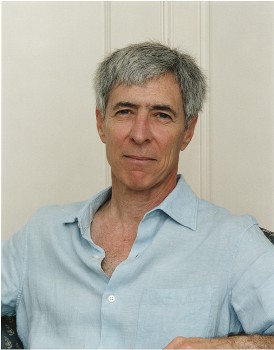Q&A with Geoffrey Kabat '67

Geoffrey Kabat '67 (photo by Jerry L. Thompson)
Details
Kaye Edwards: Your academic and professional life provides a compelling example of the power of a liberal arts education. You've garnered professional recognition as an epidemiologist, doing quantitative analyses of public health concerns that draw heavily on the social sciences and the natural sciences. Yet, you began your academic career as a French major at Haverford and then went on to complete a Ph.D. in Slavic Languages and Literature at Columbia.
Geoffrey Kabat: My mother is a painter and has always been drawn to the arts. My father was an immunochemist and a professor at Columbia for nearly 60 years. Growing up, I was drawn both to art and to science. I guess you could say that I have been trying to integrate the two very different perspectives of my parents in my own life. I actually got into public health and epidemiology by chance, after finishing my dissertation on Dostoevsky and publishing it as a book. One critical factor was that, compared to the prospects for an academic career in Russian literature back in the mid-1970s, doing research in the area of health was greatly valued—and well-funded— and there were always interesting questions to address. I enjoy doing epidemiology for its intrinsic intellectual challenges but also because it holds out the promise of enabling us to prevent diseases which take an enormous toll. But I have never lost my love of literature. Writing Hyping Health Risks allowed me to bring together both my experience as an epidemiologist and a teacher, on the one hand, and my interest in society, language, ideology, and politics on the other. Owing to my background, I was able to approach my topic from a different angle. It was important to me to situate the question of how health hazards are perceived in its social context.
KE: What attracted you to a liberal arts education, and to Haverford in particular?
GK: In a way, you could say that I was destined to go to Haverford. My father knew the three members of the biology department—one of whom, Irving Finger, had done a post-doc in his lab—and he was a Phillips lecturer here in 1959. He came back from his visit to the campus and told my older brother Jonny what a wonderful place it was. So, Jonny went to Haverford three years ahead of me in 1960, and he would write copious letters home telling of the escapades and pranks of his highly intelligent but anarchic classmates and stories about his colorful professors. He recounted how Fay Selove and Ariel Lowey would get up in Quaker Meeting and hold forth on the bane of the arms race. So, I was infected with Haverford early on. I was so set on going to Haverford that it was the only college I ever applied to. Like my brother, I loved Haverford. I had so many memorable teachers and formed close bonds with professors—including Brad Cook, Marcel Gutwirth, and Alfred Satterthwaite—some of which have lasted to the present day.
KE: How does someone with your strong interests in the humanities end up devoting his professional career to such a quantitative discipline?
GK: I never wanted to be confined to just one highly-specialized discipline. I've always admired people who make use of multiple talents and are able to be active in more than one area. I always wanted to be an intellectual and have broad interests but also to have a connection to the real world. Epidemiology has given me that connection. And having completed the book, I feel that, in addition to the“quantitative discipline,” I have identified an area in which I can discuss issues that I find fascinating, because they are not solely scientific. They involve the public's understanding of science and the way scientific findings get used in policy-making.
KE: Your book provides convincing evidence that environmental pollutants such as low-level radon, electromagnetic fields and second-hand smoke do not cause significant health risks and that the public's attention could be more productively directed towards other issues. What are some more pressing issues that we could be addressing?
GK: I'll just mention a few that, in my opinion, merit sustained attention, in contrast to the inflated hazards I discuss in the book. I am speaking mainly about industrial countries, since the topics discussed in the book pertain to these societies. First, the increase in obesity and, concomitantly, of Type 2 diabetes is a major public health issue, with enormous potential consequences in terms of premature death and disability. Second, keeping food, animal feed, and medications free from industrial and microbiological contamination in a global economy is a serious problem. The USDA is in the process of setting up facilities in China and other countries in order to inspect products destined for shipment to the U.S. at their source. Finally, my book is not intended to imply that we should be complacent about environmental pollution, whether at a local level or at the global level. Major sources of environmental pollution include contamination of surface water from strip-mining and large-scale animal husbandry, and air pollution from coal-fired power plants and smelters. Heavy metals and other compounds from these sources can enter the food chain and drinking water.



